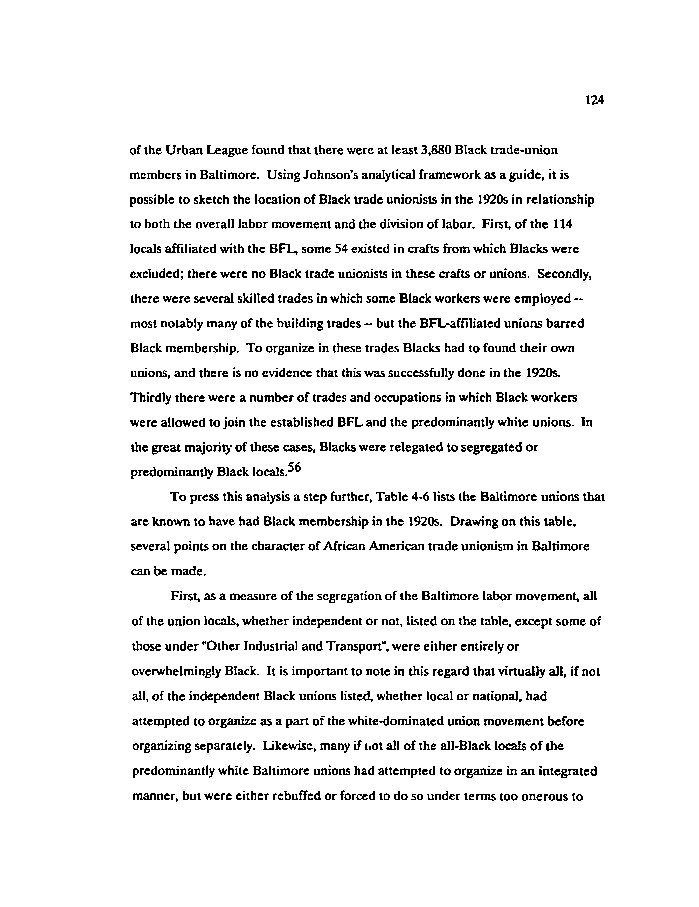|
124
of the Urban League found that there were at least 3,880 Black trade-union
members in Baltimore. Using Johnson's analytical framework as a guide, it is
possible to sketch the location of Black trade unionists in the 1920s in relationship
to both the overall labor movement and the division of labor. First, of the 114
locals affiliated with the BFL, some 54 existed in crafts from which Blacks were
excluded; there were no Black trade unionists in these crafts or unions. Secondly,
there were several skilled trades in which some Black workers were employed -
most notably many of the building trades — but the BFL-affiliated unions barred
Black membership. To organize in these trades Blacks had to found their own
unions, and there is no evidence that this was successfully done in the 1920s.
Thirdly there were a number of trades and occupations in which Black workers
were allowed to join the established BFL and the predominantly white unions. In
the great majority of these cases, Blacks were relegated to segregated or
predominantly Black locals.^"
To press this analysis a step further, Table 4-6 lists the Baltimore unions that
are known to have had Black membership in the 1920s. Drawing on this table,
several points on the character of African American trade unionism in Baltimore
can be made.
First, as a measure of the segregation of the Baltimore labor movement, all
of the union locals, whether independent or not, listed on the table, except some of
those under "Other Industrial and Transport", were either entirely or
overwhelmingly Black. It is important to note in this regard that virtually all, if not
all, of the independent Black unions listed, whether local or national, had
attempted to organize as a part of the white-dominated union movement before
organizing separately. Likewise, many if not all of the all-Black locals of the
predominantly white Baltimore unions had attempted to organize in an integrated
manner, but were either rebuffed or forced to do so under terms too onerous to
|

